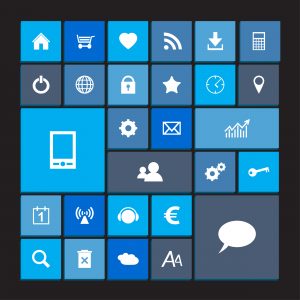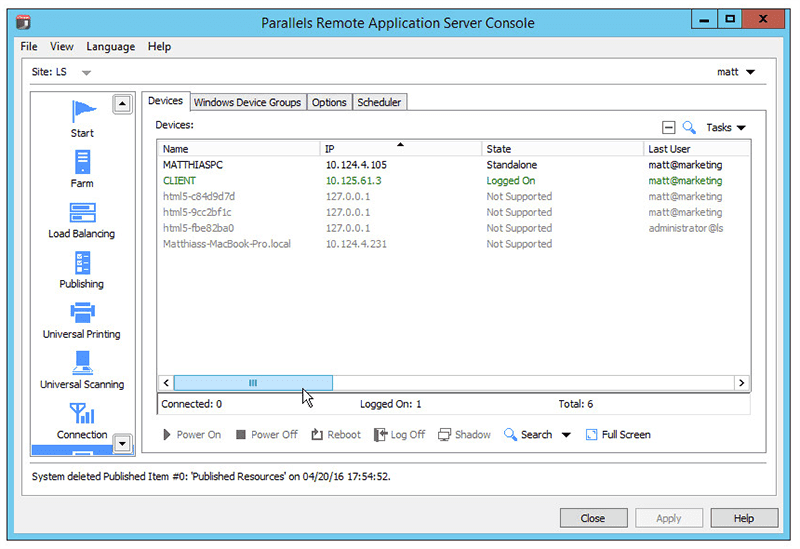Microsoft server 2012, Is it enough for my business?
Microsoft server 2012 Version R2
The new version of Windows Server, 2012 R2, comes with many useful features. The improved version of Hyper-V offers a good alternative to VMware products. Businesses can use Windows 2012 R2 to effectively provide remote desktop services to clients and customers. However, the main question is whether Microsoft 2012 R2 is enough for your business’s RDS (remote desktop services) needs.
Microsoft server 2012 – Overview
Microsoft 2012 R2 is the server version of the Windows operating system. The 2012 R2 version is also nicknamed Windows Server 8. Along with networking abilities, RDS is one of the notable features of this new version. (Terminal Services in Server 2008 are renamed as Remote Desktop Services in 2012 R2). RDS provides businesses with the ability to remotely connect to virtual desktops remote applications. The key benefit is its ability to centrally control remote applications accessed from a variety of devices.
The VDI (Virtual Desktop Infrastructure) deployment feature that was introduced in 2008 R2 has been enhanced to enable administrators to efficiently deploy and manage VDI environments. VDI environments can be quickly and automatically deployed and managed centrally using an inexpensive virtual storage system. In 2008 R2, application publishing was a time-consuming process. 2012 R2 offers a centralized resource publishing system to quickly publish and manage remote applications from a centralized location.
Limitations 
Microsoft 2012 R2 comes with several useful features, but does not provide a complete solution for application and desktop publishing and delivery. There is no client management, no reporting, no universal scanning, and users are very limited in what client software they can use to access published resources. Limitations:
- Installation and configuration are complicated.
- Backup and restore are not centralized.
- Limited only to Hyper-V.
- Load balancing is not available in the STD Version.
- There is no support for devices on iOS or Android.
- Session shadowing is very complex to implement.
- Filtering is limited to Active Directory.
- No centralized reporting and monitoring.
- Application publishing is not available in the STD Version.
- No additional protection available for RDP.
- High availability is complex to implement.
- No client manager.
Though the installation procedure is simpler in the new version, administrators need to be well-trained on server software and virtualization concepts. RDS features require an Active Directory and standalone servers would not serve this purpose. To publish applications, you need to install additional Microsoft components that add to the complexity. The RDP connection cannot be reinforced: it is not possible to implement a second level of security such as DeepNet or SafeNet. High availability is complex to implement since any server and gateway must be configured separately.
Load balancing is not readily available in this package and you need to install components like Microsoft NLB, which again requires expert knowledge to install and configure. 2012 R2 does not offer a centralized system to back up and restore; you need to back up each server separately. Connections can be filtered on the basis of users and groups only. iOS and Android users cannot enjoy all the features of 2012 R2. For efficient monitoring of the network, you need to install additional reporting components. One of the main advantages of RDS is the capability to centralize data, applications and remote desktop; unfortunately Windows Server 2012 R2 cannot manage and monitor the clients to which these services are delivered.
Conclusion
Windows Server 2012 R2 has progressed in helping businesses benefit from the advantages of application virtualization and remote desktop publishing; centralization of data and applications can reduce the risk of data loss and increase productivity. However, when the product is examined closely it is evident that the improvements made are not enough for companies to benefit fully from this new technology paradigm. The product is a good start but still misses important features.
IT administrators have to work on configuration and installation of the additional components needed to arrive at an acceptable level of service. In a large enterprise this workload can be distribute over several teams, but in small- to medium-sized businesses this is almost impossible to implement because of a lack of resources. Also the TCO (total cost of ownership) of a complex system is always very high, often resulting in inefficiency and lack of service. Businesses need to embrace application virtualization and remote desktop publishing. This new technology paradigm is the solution to reduce operational costs and to allow effective remote working. Windows 2012 R2 on its own is definitely not enough.
Microsoft server 2012 & Parallels Remote Application Server
 Parallels Software builds its solutions on the concept of easy-to-use and all-in-one products. In line with this vision, Parallels Remote Application Server (Parallels RAS) effectively answers all the challenges reviewed above. A GUI-based wizard is available for installation and configuration, so that all the features of Parallels RAS can be up and running in less than five minutes. Advantages:
Parallels Software builds its solutions on the concept of easy-to-use and all-in-one products. In line with this vision, Parallels Remote Application Server (Parallels RAS) effectively answers all the challenges reviewed above. A GUI-based wizard is available for installation and configuration, so that all the features of Parallels RAS can be up and running in less than five minutes. Advantages:
- Reduced setup and configuration time.
- Publishing any application is a matter of a few clicks.
- Easy, high availability: additional gateways, servers and backup servers can be added through a wizard.
- Backup and restore are centralized and manageable from the console.
- Mix different hypervisors to publish VDI and RDS: Vmware, Hyper-v, Citrix.
- Built-in resource-based load balancing.
- Shadowing is preconfigured: take control of the entire workstation, not only the remote desktop.
- Reinforced filter and control, in addition to Active Directory, by MAC and IP address and client.
- Supports “one time code” authentication such as DeepNet and SafeNet.
- Report log is centralized for easy reporting and monitoring.
- Parallels RDP Client runs on Windows, Mac, Linux, iOS, Android and several other platforms.
- Parallels RAS converts Windows XP workstations into secure thin clients.
- Complete control of Windows workstations from XP, 7, 8 and 8.1.
- Universal printing and scanning are embedded in the product.
Application publishing is ready to use: you just need to make a few clicks on the console to deliver what you want to your network. Using the application server console, you can easily and centrally manage the entire network. In addition to user- and group-based filtering, Parallels RAS allows you to filter connections based on the Gateway, MAC address, IP address and the client, because Active Directory alone is not enough to address companies’ different data security requirements.
The striking feature of Parallels RAS is that it is a comprehensive solution to your remote networking needs, wherein features like load balancing, scalability, high availability, security and authentication, reporting and backup options are packed into a single entity. Load balancing is embedded, easy to configure and resource-based, to guarantee the best possible performance to any user. High availability is easy to achieve: additional servers and gateways can be added at any time, and the process is fast, easy and effective. To reinforce the RDP connection, Parallels RAS is compatible with SafeNet and DeepNet. Backup and restore functions are centralized in the console, in order to have all the infrastructure under control.
The reporting and monitoring functions offer the possibility to control and monitor your license usage, workload and client activity. Parallels RAS enables instant connections with the remote Client: Parallels shadowing allows technicians to offer assistance to any local device. The technical support team can connect to the device and manoeuvre it with the same agility as though they were sitting in front of it. Unlike Windows 2012 R2 where session shadowing can only handle a session, Parallels RAS shadowing takes control of the remote desktop session as well as the entire workstation, and the IT administrator can also log off, power off, power on and change system settings on any Windows client.
Parallels Remote Application Server allows administrators to fully manage and control Windows devices running Windows XP up to Windows 8.1. The Windows desktop can be replaced, thus converting the machine to a thin client, on all platforms. Nowadays you need to have a central point of management to keep your business up and running securely and easily. WithParallels RAS you can add functionality to Microsoft RDS 2012 to guarantee an outstanding performance in application and remote desktop delivery.
References
- Microsoft server 2012 – Windows Server 2012 R2 http://www.microsoft.com/en-us/server-cloud/products/windows-server-2012-r2/
- Microsoft server 2012 – What’s New in Windows Server http://technet.microsoft.com/en-us/library/dn250019.aspx
- Microsoft server 2012 – 10 excellent new features in Windows Server 2012 R2 http://www.infoworld.com/slideshow/108930/10-excellent-new-features-in-windows-server-2012-r2-222024
- Microsoft server 2012 – A First Look http://www.zdnet.com/windows-server-2012-r2-a-first-look-7000017675/
- Microsoft server 2012 – Definition http://en.wikipedia.org/wiki/Windows_Server_2012
- Microsoft server 2012 – Hyper-V Scalability in Windows Server 2012 http://technet.microsoft.com/en-us/library/jj680093.aspx
- Microsoft server 2012 – TS Session Broker Load Balancing Step-by-Step Guide http://technet.microsoft.com/en-us/library/cc772418(v=ws.10).aspx
- Microsoft server 2012 – VMware or Microsoft? Comparing vSphere 5.5 and Windows Server 2012 R2 Hyper-V At-A-Glance http://blogs.technet.com/b/keithmayer/archive/2013/09/24/vmware-or-microsoft-comparing-vsphere-5-5-and-windows-server-2012-r2-at-a-glance.aspx
- Microsoft server 2012 – Load Balancing http://technet.microsoft.com/en-us/library/jj898588(v=exchg.150).aspx
- Microsoft server 2012 – NLB vs Hardware Load Balancer http://www.erdalozkaya.com/index.php/o365-exchange-lync-sharepoint/70-nlb-vs-hardware-load-balancer
- Microsoft server 2012 – Windows Server 2012 Hyper-v Installation and Configuration Guide http://www.amazon.co.uk/Windows-Server-Hyper-V-Installation-Configuration-ebook/dp/B00BXNOD56/ref=tmm_kin_title_0
- Microsoft server 2012 – How to Configuring and Installing High Availability of #DHCP using Windows Server 2012 http://robertsmit.wordpress.com/2013/02/19/how-to-configuring-and-installing-high-availability-of-dhcp-using-windows-server-2012-ws2012/
